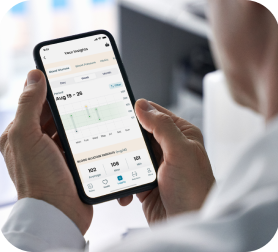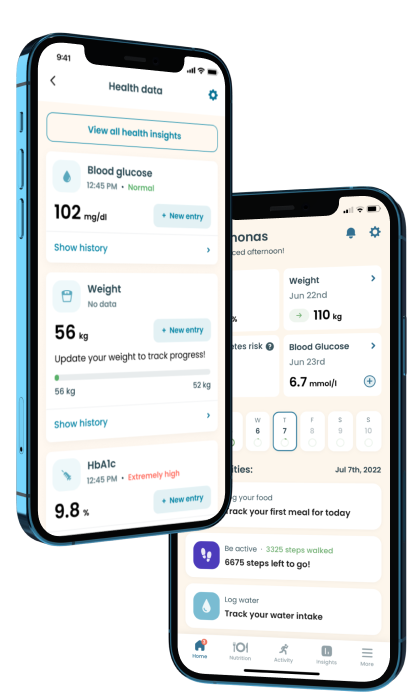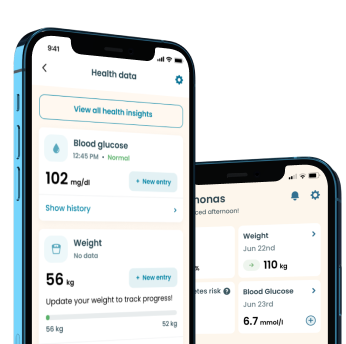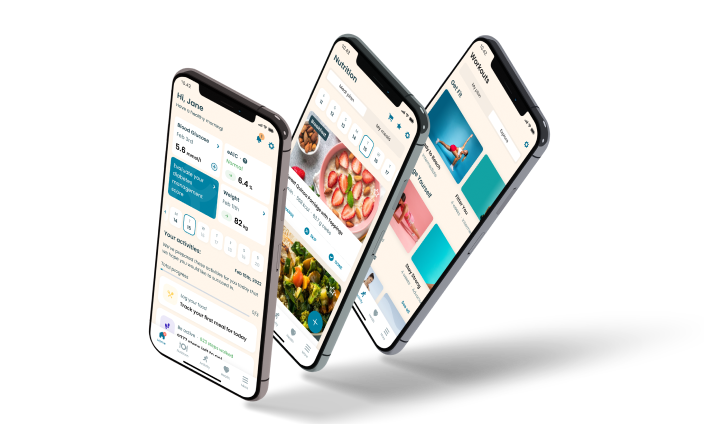Garlic and Diabetes: Is This Herb Safe for People With Diabetes?

Yes
30
162 kcal
Garlic has been around for thousands of years; this spice has found its way into most cultures' cuisine. Ancient cities have used garlic for various medicinal purposes, and to this day, it’s been delivering its many legendary health benefits. Whether consumed raw, cooked or extracted as oil, garlic has proven medicinal properties; we simply can’t overemphasize its usefulness.
When it comes to diabetes management, choosing the right foods for your meal plan is quite important. People with diabetes often avoid foods rich in carbs deemed unhealthy for their diets. The reason isn’t quite far-fetched — carbs increase blood sugar levels when consumed in large quantities.
Fortunately, foods like garlic that are low in carb content make a great fit for diabetes patients. It also packs other helpful nutrients that help in diabetes management. For example, many researchers confirm that garlic—as well as aged garlic extract—is effective in battling diabetes. This guide explores garlic’s historical timeline, its benefits, the risks associated with its consumption, and more.
What to Expect
-
Interesting Details About Garlic
-
The Major Health Benefits of Garlic to People with Diabetes
-
Other Essential Benefits of Garlic
-
Is Garlic Tea Just as Efficient?
-
Is Garlic Better Raw or Cooked?
-
Risks Associated With Garlic Consumption
Nutritional value
- Protein 6.36 g
- Carbohydrate 33.06 g
- Fat 0.5 g
- Fiber 2.1 g
- Sugar 1 g
- Cholesterol 0 g
Interesting Details About Garlic
Garlic isn’t limited to its culinary superpowers; health professionals attest to its many beneficial qualities. This onion's close cousin has proven itself useful in many aspects of human life. Of course, you get to enjoy this flavored plant in your meals, but you also get to reap all the therapeutic and health benefits it has to offer.
For many years to this day, this plant has been cultivated, and its special qualities harnessed. This section briefly examines garlic’s history and highlights its nutritional contents.
Garlic’s Historical Significance
The history of Garlic spans over 5,000 years, serving various uses to different cultures and groups. Some ancient cities used garlic as money, medicine, and food. In addition, several cultures believe this plant possesses aphrodisiac qualities. Religiously, garlic is hung over doors to ward off evil.
Ancient Egyptians used garlic as a local currency, especially to pay wages for their workers. It also served as food for the workers while working on the legendary pyramids.
About 4,500 years ago, Babylonians used garlic for medicinal and culinary purposes. Its healing properties were a hot topic of discussion among the people of Sumer between 2600 and 2100 BC. Several beliefs claim Sumerians brought garlic into China.
Garlic has its origin rooted in Central Asia, where it grows wild in countries like Kyrgyzstan, Turkmenistan, Tajikistan, and Uzbekistan. However, history points out it was also widely grown in other regions like China and Egypt.
Across the pages of history, this plant is often prescribed for severe chronic illnesses, including heart conditions, high blood pressure, etc. To be clear, it’s regarded as one of ancient China's most used remedies.
This herb was prescribed for diarrhea, worm infestations, indigestion, etc. Many even used it to treat insomnia and depression. Certain Indian medical texts like Charaka-Samhita support the claim that garlic had used in treating heart disease and arthritis.
Other historical relevance of garlic in medicine includes treating skin diseases, used as an antibiotic, and giving adrenaline boosts to athletes and workers. In addition, several cultures recommend garlic to pregnant women to aid childbirth and stimulate milk production after birth.
Garlic’s Nutritional Content
Contained in about a teaspoon full of garlic are:
-
Calories: 4
-
Protein: 0.18 g
-
Fat: 0.01 g
-
Carbohydrates: 0.93 g
-
Fiber: 0.1 g
-
Natural sugars: 0.03 g
-
Calcium: 5 mg
-
Iron: 0.05 mg (0.03 %DV)
-
Magnesium: 1 mg
-
Potassium: 11 mg
-
Vitamin C: 0.9 mg (0.02 %DV)
Take a quiz
Discover what Klinio app can do for you
Healthy diabetes meal plan crafted just for YOU

Personalized workouts with no equipment needed

Track your progress with smart tracking tools

The Major Health Benefits of Garlic to People with Diabetes
It’s been established medically that garlic plays an essential role in a diabetes diet. People with diabetes have a lot to gain by regularly consuming garlic. Several studies link the plant to reduced blood sugar levels and increased insulin sensitivity in people with diabetes. Here in more detail, are the significant benefits garlic offers people with diabetes:
Puts Blood Sugar Levels in Check
When you consume carbohydrates, it gets broken down into its simplest component, sugar. You need a good amount of carbs to maintain a healthy diet, and it’s regarded as the major source of energy. However, when consumed in large quantities over time, it increases blood sugar levels.
The pancreas releases insulin, a hormone responsible for maintaining blood sugar levels. Problems arise when the body can’t effectively use this important hormone.
Insulin resistance occurs when the body either stops responding or has difficulty properly using the insulin produced by the body. The pancreas works harder to produce more insulin to regulate blood glucose when this happens. Unfortunately, it can’t do this for long, breaking down at some point. This results in an alarming increase in blood sugar levels, leading to type 2 diabetes in people already diagnosed with pre-diabetes.
There are other risk factors associated with insulin resistance. Some of these are:
-
Obesity
-
Smoking
-
Inactivity or lacking proper exercise
-
Lack of sleep
-
High cholesterol levels
-
High blood pressure
You can lower blood sugar by consuming less carb-rich food. However, this may not be the most effective solution as too little carbohydrate in your diet can lead to hypoglycemia — a condition where there isn't enough blood sugar to meet the standard range. Luckily, there are several foods in nature that help improve insulin sensitivity. When consumed, they raise insulin levels, ensuring less sugar stays in the bloodstream. Garlic is one of these foods.
A 2014 study titled “Garlic: A Review of Potential Therapeutic Effects” reports that garlic extract effectively lowered insulin resistance. However, this study is still under review. Another study published in 2017 points out the effectiveness of raw garlic in reducing blood sugar levels.
Garlic's effectiveness in lowering blood sugar levels is also evident in its glycemic index. The glycemic index is an effective scale used to measure how a particular food influences blood sugar based on its carbohydrate content.
Healthcare professionals advise people with diabetes to avoid foods with high glycemic index as it can quickly raise their blood sugar levels. Thankfully, garlic is one of those few foods with an incredibly low glycemic index of 10–30, thanks to its low carbohydrate content. Therefore, you can safely eat garlic without the fear of spiking your blood sugar level.
Reduces “Bad” Cholesterol
Treating diabetes goes beyond having your blood sugar level in check; the presence of a high amount of low-density lipoprotein (LDL) cholesterol (“bad” cholesterol) in your body is also a cause for alarm. High cholesterol occurs due to poor eating habits, exercising less, smoking, alcohol consumption, etc. However, regardless of the trigger, it poses lots of danger when present, especially to people with diabetes.
High-density lipoprotein (HDL) cholesterol helps purge your system of the unwanted LDL cholesterol that might pose harm. Hence, it’d be best to have more of this “good” cholesterol. Losing weight by exercising is an effective way to reduce cholesterol. However, you can also do this by consuming certain foods like whole grains rich in fiber, fruits, and green leafy vegetables.
Eating garlic is another effective way to reduce LDL cholesterol and blood lipids in your body. A 2016 study on hyperlipidemic patients showed a significant decrease in LDL in patients given 20 g of garlic daily.
Replacing garlic with butter is a smart way to introduce more of this herb into your diabetes diet and eliminate those unwanted fats. However, ensure you consult your doctor before fixing garlic into your diet.
Rich in Essential Vitamins and Minerals
Garlic comprises several nutrients, including carbohydrates, fiber, and fats in minute quantities. It also packs several vitamins and minerals, including but not limited to vitamin C, vitamin E, sodium, iron, germanium, etc.
Vitamins are important nutrients you can't do without. Although your body produces vitamins on its own, it doesn't produce enough to serve your body's needs. Hence, you need to get the rest from food sources.
Plant-based foods like fruits and vegetables are rich sources of vitamins. You can also get these nutrients from animals and animal products like milk, eggs, etc.
People with diabetes have a lot to gain by consuming vitamin-rich foods. Garlic contains essential B vitamins like niacin, riboflavin, and thiamin. It also contains vitamin C, E, K, and others.
Vitamin C in garlic functions as an antioxidant that helps eliminate free radicals in the body. This vitamin also helps boost the body's immune system.
Most B vitamins contained in garlic play a major role in carbohydrate metabolism while having other essential functions. For example, niacin helps regulate cholesterol levels in the body and aids cell growth. Additionally, it’s beneficial to your digestive and nervous systems.
Thiamin plays a part in maintaining blood sugar levels, which is essential for people with diabetes. It also helps keep healthier skin, hair, and muscles.
Lowers Blood Pressure
High blood pressure is common in diabetes patients. According to statistics, 73.6% of adults with diabetes have hypertension. This condition increases the risk of developing health complications like heart disease.
Recent research on garlic's effect on hypertensive patients indicates this plant significantly lowers blood pressure in patients. Key among garlic’s content is allicin — a compound that effectively regulates blood pressure.
Other Essential Benefits of Garlic
The health benefits of garlic aren’t limited to the ones above; it serves other medicinal purposes that we simply can’t overlook. For example, eating garlic is an effective way to boost your brain health. This is because it contains minerals like iron, potassium, manganese, copper, etc., that have been closely tied to improving cognitive functions.
Also, it helps the liver perform better by protecting it from toxins. Your heart isn’t left out, as this plant helps lower blood pressure and reduces inflammation, improving the health of your cardiovascular system.
Aside from these, you can enjoy healthier and smoother skin by consuming garlic. Its strong antibacterial and antifungal properties help fight off irritations and infections like acne and inflammations when rubbed on the skin. Some studies also indicate it acts as a powerful antibiotic when eaten on an empty stomach.
Is Garlic Tea Just as Efficient?
Garlic tea is made by boiling the plant, extracting the water, and adding lemon and honey. It's generally safe for consumption, with many claims regarding the benefits of garlic tea, especially for diabetes. Unfortunately, there’s been little to no scientific research backing the credibility of these claims.
The health benefits of drinking garlic tea are often attributed to the individual components of the tea. Ingredients like lemon, ginger, and honey offer key health benefits in various ways.
This isn’t to say garlic tea isn’t beneficial as a whole. On the contrary, consuming it can indeed be helpful. However, replacing the main garlic plant with garlic tea isn’t recommended. You benefit a lot more by consuming garlic raw or when used to prepare meals.
Is Garlic Better Raw or Cooked?
You might wonder which is the best choice — cooking garlic or eating it raw? Raw garlic packs more allicin which is regarded as the powerhouse of garlic. It’s the compound responsible for its odor and one of the plant's most efficient components.
When you consume raw garlic, you get more of this beneficial nutrient. However, some people can't quite tolerate the strong smell garlic gives. Hence, they cook it to help reduce this smell to a more tolerable level.
Sadly, cooking garlic depletes some of its essential vitamins and minerals. Hence, when it comes to making the best choice, raw garlic takes the lead — garlic consumption in its raw form gives more nutrients than when cooked. Enjoy it in your salad or chew on it a couple of times during the day.
Risks Associated With Garlic Consumption
While garlic offers certain essential benefits to the body based on its compounds, there are certain risks and side effects to look out for with garlic consumption. Over-eating garlic may cause heartburn, nausea or gas, especially when consumed in its raw form.
Consuming too much of this plant can also increase the risk of bleeding and cause digestive issues. Eating raw garlic might result in body odor and even bad breath in some people.
To avoid some of these side effects, you should consume garlic in moderate amounts. You can also eat food containing garlic with milk to lessen its effect on body odor and breath.
The Bottom Line
Garlic is a good source of nutrients like vitamins and minerals, which plays essential roles in managing diabetes. You can also use it to spice up the taste of your meal.
While many people avoid raw garlic due to its strong smell, it’s more effective in this form, offering much of its nutrients in its raw state. Cooking garlic may lower its nutrient quantity and even make it lose some of its therapeutic quantity. Ensure you consult your doctor to determine the best way to fit garlic into your diet.
Diabetes management becomes much easier when you learn what constitutes a healthy diet and apprise yourself of the pitfalls to avoid. What better way to do this than using our diabetes management app? Effectively designed to help you manage this condition, you get access to top-notch meal plans fit for a diabetes diet, easy-to-follow exercise routines, and an efficient progress tracker.

Download Klinio app!
Get more by downloading our free Klinio App. Analyze your health, form new habits and manage your diabetes anytime, anywhere.
OR
SCAN QR CODE



GET THE APP











